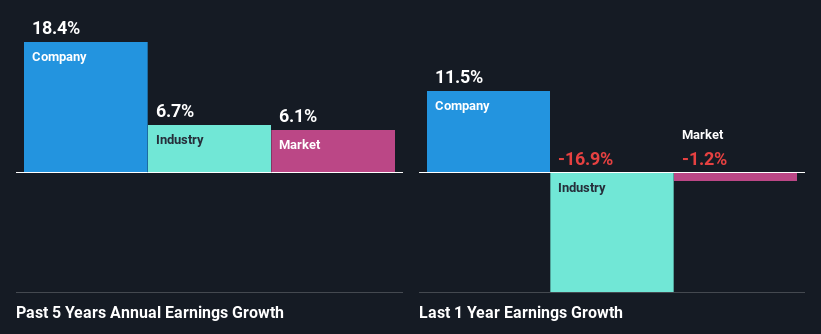Most readers would already be aware that Sumec's (SHSE:600710) stock increased significantly by 21% over the past three months. Given that the market rewards strong financials in the long-term, we wonder if that is the case in this instance. Particularly, we will be paying attention to Sumec's ROE today.
ROE or return on equity is a useful tool to assess how effectively a company can generate returns on the investment it received from its shareholders. In other words, it is a profitability ratio which measures the rate of return on the capital provided by the company's shareholders.
How Do You Calculate Return On Equity?
The formula for ROE is:
 Return on Equity = Net Profit (from continuing operations) ÷ Shareholders' Equity
Return on Equity = Net Profit (from continuing operations) ÷ Shareholders' Equity
So, based on the above formula, the ROE for Sumec is:
23% = CN¥3.3b ÷ CN¥14b (Based on the trailing twelve months to September 2024).
The 'return' refers to a company's earnings over the last year. So, this means that for every CN¥1 of its shareholder's investments, the company generates a profit of CN¥0.23.
What Is The Relationship Between ROE And Earnings Growth?
Thus far, we have learned that ROE measures how efficiently a company is generating its profits. We now need to evaluate how much profit the company reinvests or "retains" for future growth which then gives us an idea about the growth potential of the company. Generally speaking, other things being equal, firms with a high return on equity and profit retention, have a higher growth rate than firms that don't share these attributes.
A Side By Side comparison of Sumec's Earnings Growth And 23% ROE
First thing first, we like that Sumec has an impressive ROE. Secondly, even when compared to the industry average of 6.5% the company's ROE is quite impressive. Probably as a result of this, Sumec was able to see a decent net income growth of 18% over the last five years.
As a next step, we compared Sumec's net income growth with the industry, and pleasingly, we found that the growth seen by the company is higher than the average industry growth of 6.7%.

The basis for attaching value to a company is, to a great extent, tied to its earnings growth. What investors need to determine next is if the expected earnings growth, or the lack of it, is already built into the share price. Doing so will help them establish if the stock's future looks promising or ominous. If you're wondering about Sumec's's valuation, check out this gauge of its price-to-earnings ratio, as compared to its industry.
Is Sumec Making Efficient Use Of Its Profits?
With a three-year median payout ratio of 41% (implying that the company retains 59% of its profits), it seems that Sumec is reinvesting efficiently in a way that it sees respectable amount growth in its earnings and pays a dividend that's well covered.
Besides, Sumec has been paying dividends over a period of eight years. This shows that the company is committed to sharing profits with its shareholders.
Summary
Overall, we are quite pleased with Sumec's performance. Specifically, we like that the company is reinvesting a huge chunk of its profits at a high rate of return. This of course has caused the company to see substantial growth in its earnings. Having said that, the company's earnings growth is expected to slow down, as forecasted in the current analyst estimates. Are these analysts expectations based on the broad expectations for the industry, or on the company's fundamentals? Click here to be taken to our analyst's forecasts page for the company.
Have feedback on this article? Concerned about the content? Get in touch with us directly. Alternatively, email editorial-team (at) simplywallst.com.
This article by Simply Wall St is general in nature. We provide commentary based on historical data and analyst forecasts only using an unbiased methodology and our articles are not intended to be financial advice. It does not constitute a recommendation to buy or sell any stock, and does not take account of your objectives, or your financial situation. We aim to bring you long-term focused analysis driven by fundamental data. Note that our analysis may not factor in the latest price-sensitive company announcements or qualitative material. Simply Wall St has no position in any stocks mentioned.

